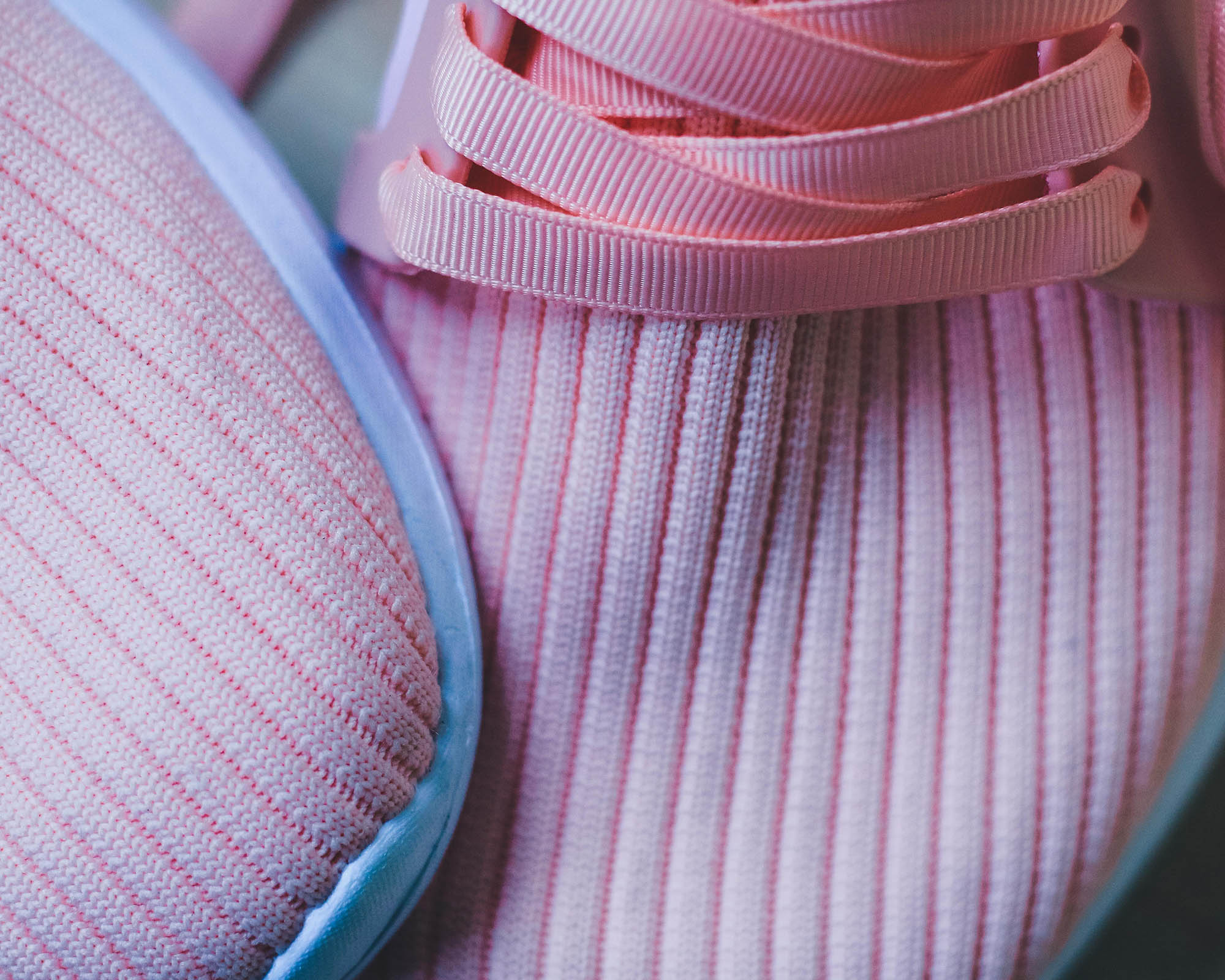If you’re concerned about the environmental impact of fashion, you probably spend some time reading garment tags to find out what your clothes are made of. When looking at labels, it doesn’t take a magnifying glass to notice that one fabric comes up more than most: polyester. Today, we’ll investigate and answer the question: how sustainable is polyester?
When did polyester first arrive on the scene?
Polyester fabric hasn’t been around forever. Our grandparents were clothed in plant- and animal-based materials such as wool, linen, and cotton. By the end of World World II, the latter accounted for over 80% of fibre consumed.
Chemical advances in the 1940s introduced artificial fibres and so began a gradual shift away from cotton, turning towards cheaper and faster textile production methods. Nowadays, polyester dominates the clothing industry, with annual production exceeding 52 million metric tonnes worldwide.
So what exactly is polyester?
The term ‘polyester’ describes a category of polymers produced by mixing ethylene glycol (derived from petroleum) and terephthalic acid.

Chemical jargon aside, polyester is a common plastic with a wide range of applications extending beyond the fashion industry.
It ranks third behind polyethylene (packaging and water bottles) and polypropylene (ropes, stationary, and Australian bank notes) as the most commonly used plastic.
Polyester is not biodegradable
The majority of polyesters are not biodegradable, meaning that the polyester fabric shirt you bought last season will not decompose for 20 years at best and 200 years at worst.
What’s more, polyester is partially derived from petroleum, and the oil manufacturing industry is the world’s largest pollutant.
Polyester dyes are not sustainable
Ever notice how polyester fabrics are stain-resistant? That’s because it takes a special kind of dye to colour polyester successfully. These dyes, known as disperse dyes, are insoluble in water. Like polyester, they are made up of a complex molecular structure that does not readily decompose.
Wastewater from textile factories containing leftover dye is difficult to treat. When it enters the environment, its toxicity causes serious problems to local plant and animal life.
In addition to causing environmental problems, polyester dyes are toxic to humans. Dye workers worldwide report higher incidences of cancers and lung disease than the general population.
Polyester manufacturing is water-thirsty
Polyester is created through an energy-intensive heating process and requires large quantities of water for cooling. If not managed properly, this can result in groundwater levels dropping and reduced access to clean drinking water, particularly in vulnerable communities where polyester is often manufactured.
What about recycled PET plastic?

In the past few years, the sustainable fashion sphere has been introduced to recycled PET plastic, which has become a ‘sustainable’ replacement for polyester fabrics. Recycled PET plastic is usually made from recycled plastic bottles. Buying recycled PET plastic means that you’re minimising waste and cutting out the fossil fuel industry.
Be careful with fleeces, though. Studies have shown that plastic microfibres are polluting waterways at an alarming rate and that fleece made from recycled PET plastic may be more polluting than its original form.
More on those microfibres
Multiple studies have shown that synthetic fibres make up a good share of microplastics found in waters and are widely implicated as the source of pollution. It’s been suggested that more than 4,500 fibres can be released per gram of clothing per wash, according to the Plastic Soup Foundation.
Microfibres are so tiny they can easily move through sewage treatment plants. They do not biodegrade and bind with molecules from harmful chemicals found in wastewater. They are then eaten by small fishes and plankton, concentrating toxins and going up the food chain until they reach us. The consequences of microfibres on the human body have yet to be researched and revealed. Until then, here are our top tips on dealing with microfibres in clothing.
What can we do to dress more sustainably?

- Look for garments made from more eco-friendly materials, like organic cotton, hemp, or Tencel, or from reused, upcycled, and recycled materials and coloured using natural dyes.
- Choose well, buy less. Even garments made with natural fibres have ethical issues. Cotton is one of the thirstiest and dirtiest fabrics, and the wool industry has sometimes been criticised for unethical practices. By choosing well and buying less, you help discourage the unsustainable over-production of fibres at a cost to the environment and the world’s most vulnerable people.
- Buy from second hand and charity shops. An even better alternative to buying fewer new things is buying more pre-loved garments from second hand stores. Since polyester garments are both common and durable, you will find plenty of options in thrift shops that show few signs of wear and tear and will stand the test of time.
- Wash less and wash better. Solutions are starting to appear to avoid microfibre shedding during washing, such as special laundry bags and laundry balls. You can also wash on cold, with a fuller load, and using liquid detergent to reduce shedding—and line-drying is always a better option for the environment and your clothes!
- Choose brands with policies that protect and respect the planet and the people making their products. Good On You helps you uncover brands that perform better on the issues you care about. Check out the app or Directory to discover brands that tick all your boxes.
















